Croatian Beer Industry: Biggest Players, Trends, and Market Position
March 12th, 2022 - TCN intern Toni Petričić takes a look at the Croatian beer industry in 2020.
In this industry overview, I will try to analyze the Croatian beer industry and show its structure, the most prominent players, trends, and position compared to other beer markets.
From the latest statistical report from the European Brewers association, we can see that there are 98 breweries registered in Croatia, which had a total of 1690 direct employees.
In 2020, the Croatian beer industry shrunk by 12% compared to 2019, according to Heineken Hrvatska financial reports. The pandemic year was marked by lockdowns and lower-performing tourism season, which are the main reasons behind this drop. When looking at the distribution channels, the HORECA channel (hotels, restaurants, and catering) was hit the most with a staggering drop of -38,8%. However, the decrease mentioned above was partially reimbursed by the rise of 1.9% in the retail channel and “on the go” channel (gas stations and kiosks), with an astonishing increase of 61.9%.
Production
According to the European Brewers Association, beer production in Croatia has amounted to 2344 thousand Hl, which was a drop of 28% compared to 2019. For comparison, in the EU 27 member states, there was a drop of 6%. Furthermore, in the period before the pandemic from 2014 to 2019, Croatian beer production dropped by 5%, while in the same period, the beer production in the 27 EU member states rose by 5%.
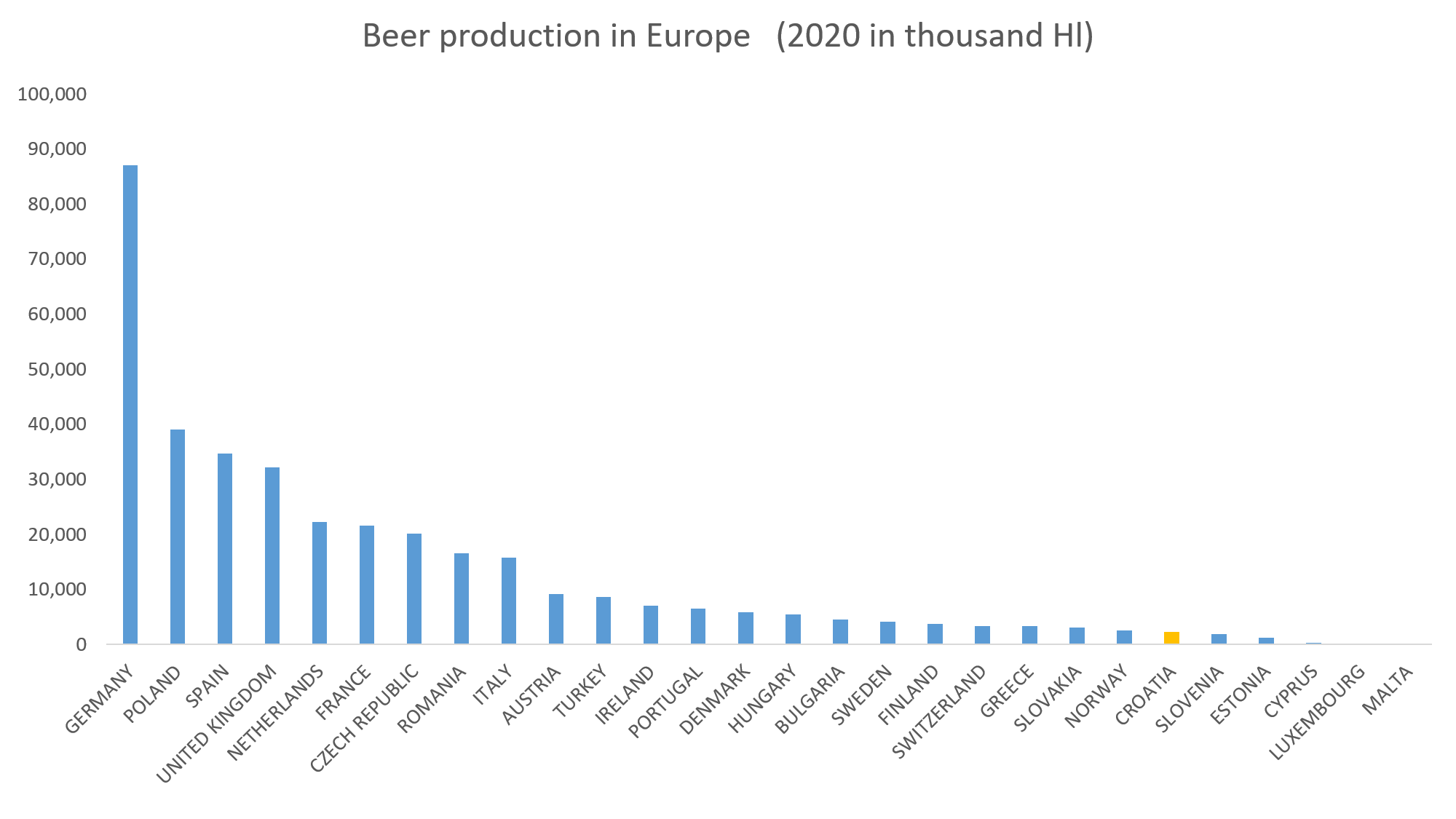
Consumption
In 2020, beer consumption in Croatia was 2808 thousand Hl, which is a drop of 22% compared to 2019. European countries that were surveyed had in total 8% lower beer consumption. From 2014 to 2019, beer consumption in Croatia increased by 11%, while in surveyed European countries, it increased by 5%.
It is more interesting to look at the consumption per capita, where Croatia holds a strong sixth place among the surveyed European countries with 81 liters of beer consumed yearly. In 2019 it was fifth with 88 liters of beer consumed yearly,
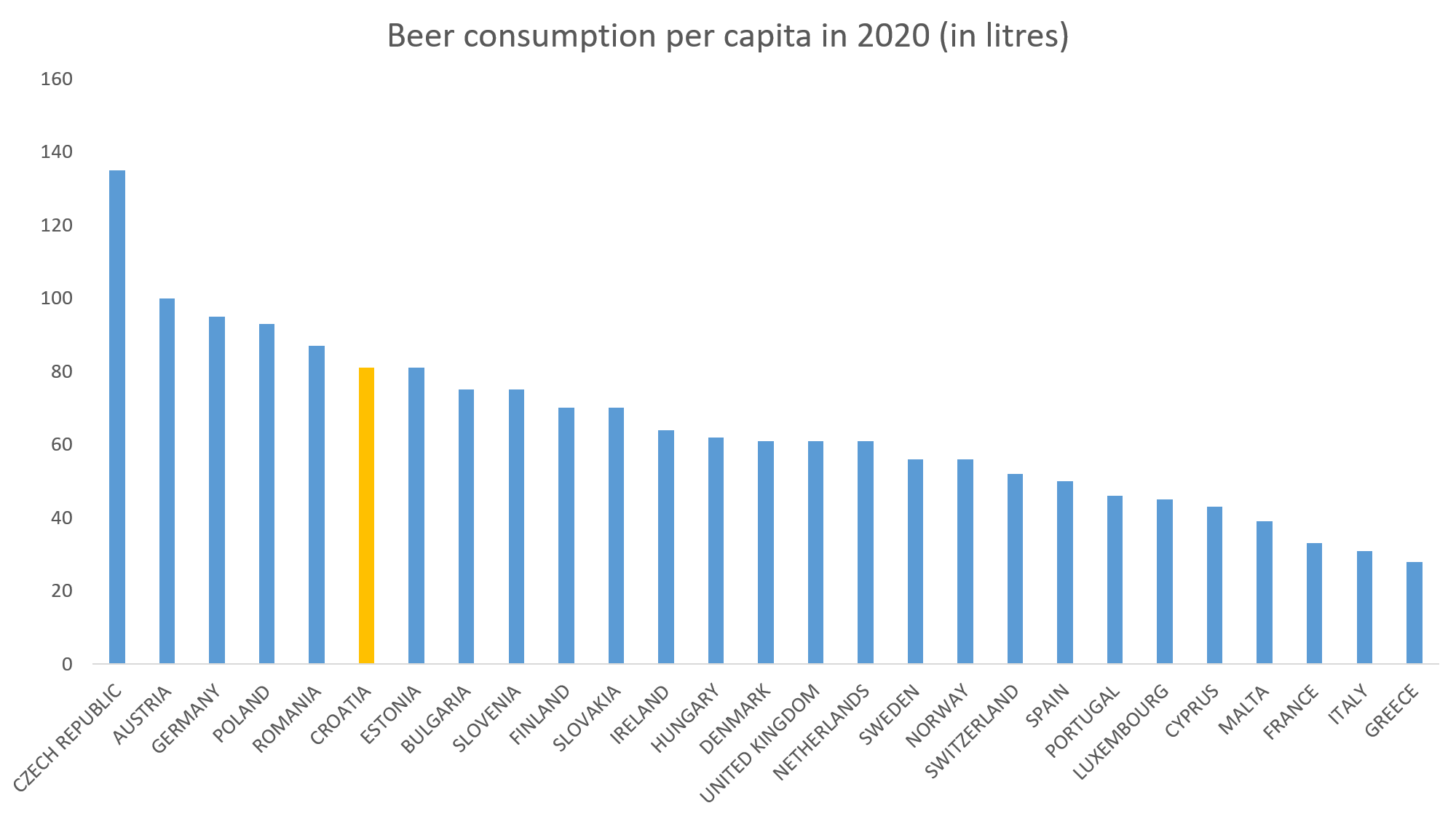
Distribution channels
In 2020, 69% of beer sales came through off-trade, including wholesale and retail, while 31% came from on-trade, which has pubs restaurants, i.e., the hospitality sector. The same ratio was 40%-60% in 2018, which clearly shows the impact of the pandemic.
Trade
In 2020 Croatia imported 995 thousand Hl, of which 83% came from EU member states. Imports made 35% of all beer consumed in Croatia in 2020, a significant increase compared to 2019 when imports made 27%. The graph below can observe beer imports and exports from 2009 to 2020. We can notice that Croatia went from a beer net exporter to a beer net importer in that period. In the same period imports and exports from and to EU countries have increased by 189% and 143% each respectively. On the other hand, imports from non-EU countries have increased by 102%, while exports have decreased by 18%. From 2013 onwards, when Croatia became an EU member state, the trade relations with the EU intensified more rapidly.
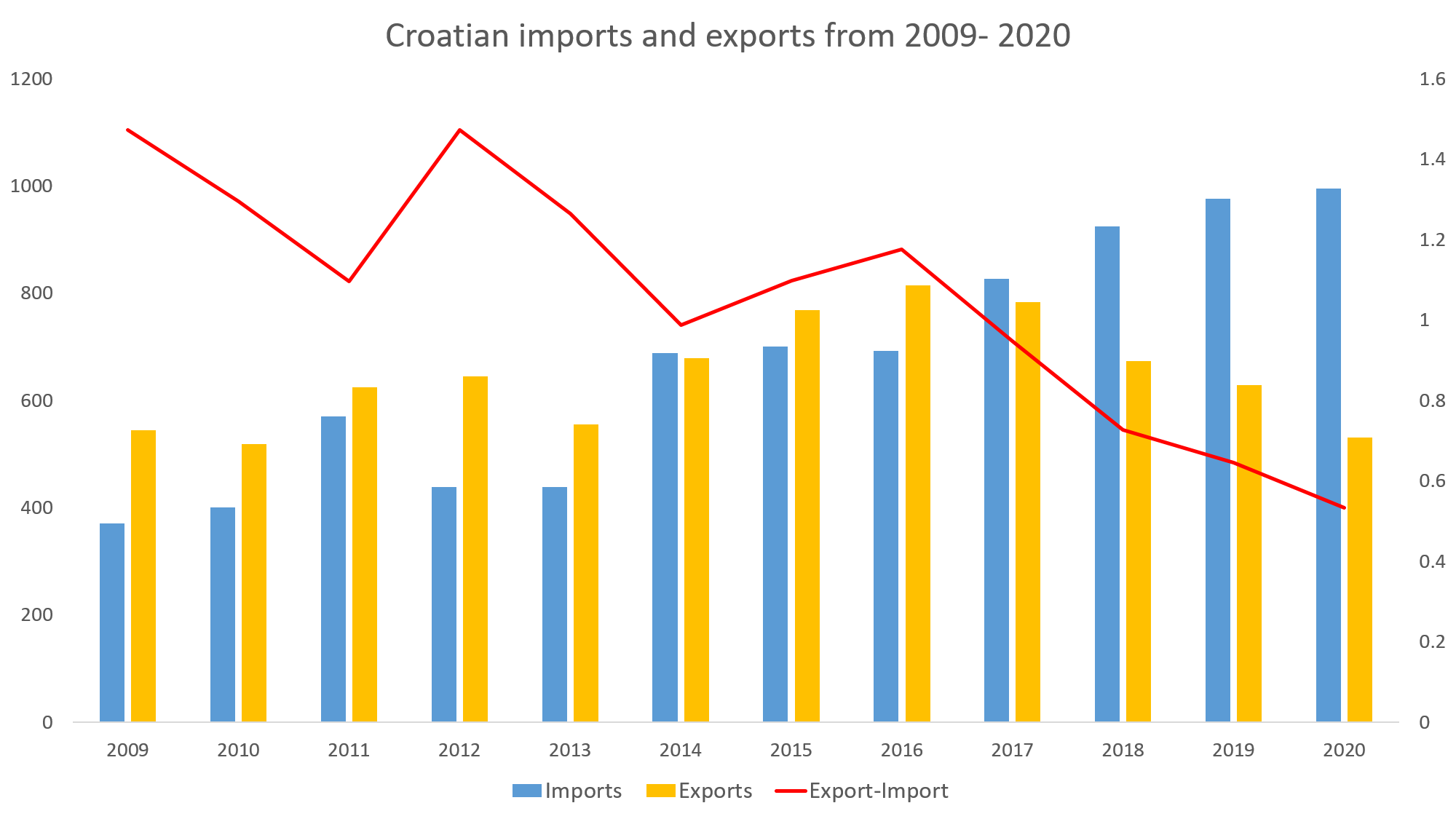
Market structure
According to my analysis, the Croatian beer market valued at approximately 2,25 billion HRK in 2020. 72,6% of that market is held by the 3 most prominent companies, which leads us to conclude that the Croatian Beer Industry is a concentrated market. HHI index, which is a measure of market concentration, was approximately 2280, making this market moderately concentrated. Still, it is very close to the upper boundary of 2500, where highly concentrated markets start.
Biggest players
The three most prominent players are, in order of their market share, Zagrebačka Pivovara, Heineken Hrvatska, and Carlsberg Croatia.
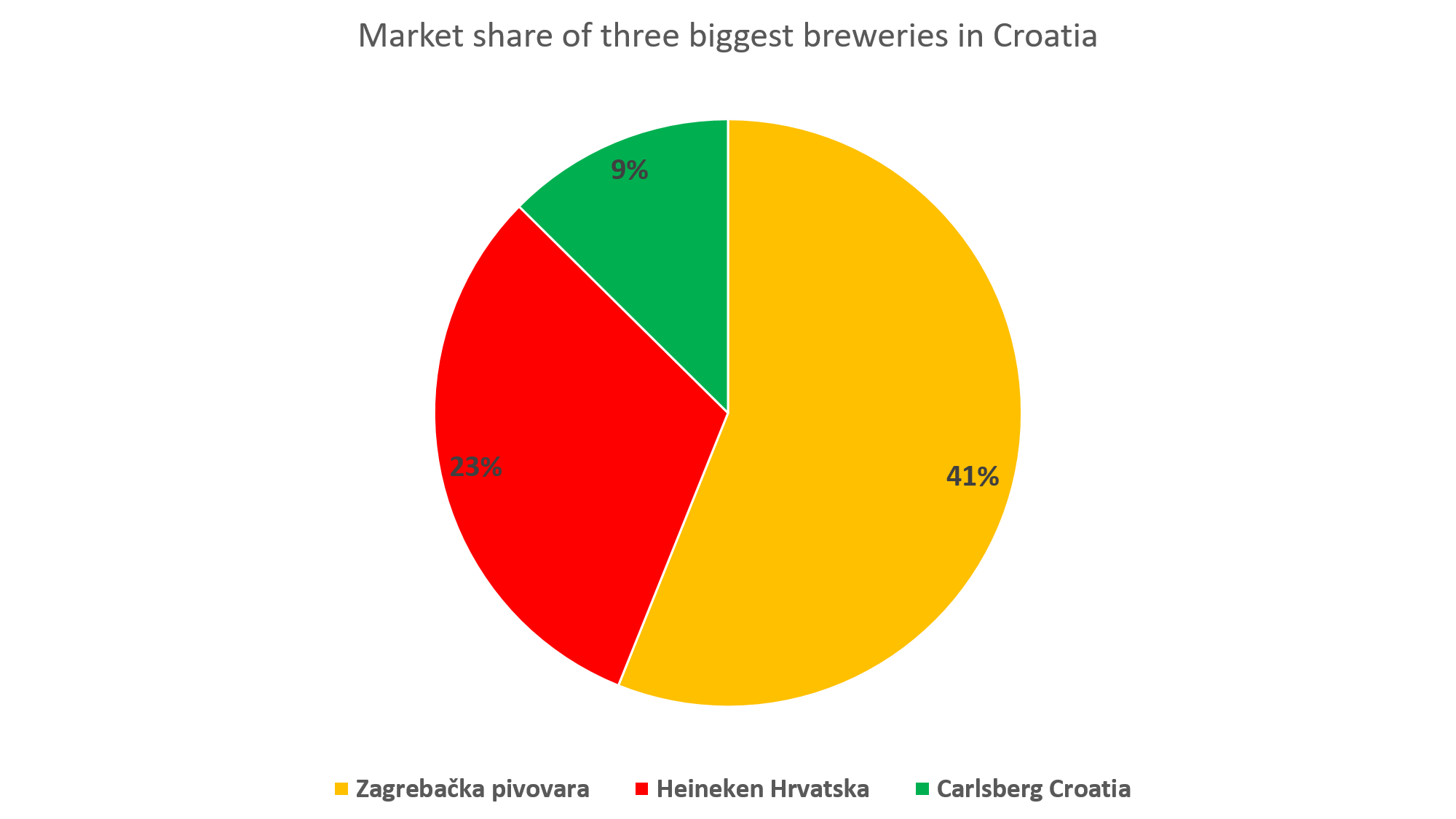
Zagrebačka Pivovara is the market leader in the Croatian beer industry, with a 40,7% market share in 2020. It was established in1892 in the city of Zagreb. In 2012, they were acquired by Molson Coors Brewing Company, one of the world's largest beer producers. Today they have 577 employees and total revenue of 1.01 billion HRK. Their flagship beer brand is Ožujsko, but they also control brands such as Beck's, Corona, Leffe, Nikšićko, Staropramen, Stella Artois, Hoegaarden, and Lowenbrau.
Karlovačka Pivovara was established in 1854 in the city of Karlovac. In 2003, Heineken International acquired it and was later renamed Heineken Hrvatska. Today it holds the position of the second-largest beer company in Croatia, with a market share of 23%. Heineken Hrvatska employs 326 people and has a total revenue of 542 million HRK. Their brand include: Karlovačko, Heineken, Laško, Union, Krušovice, Desperados, Stari Lisac, StrongBow, Affligem and Edelweiss.
Panonska Pivovara was founded in 1971 as part of Podravka. Carlsberg Breweries has been a shareholder since 1994 and was steadily increasing its share. In 2004 Panonska Pivovara became Carlsberg Croatia. Today Carlsberg Croatia has 295 employees and total revenue of 319 million HRK. Their beer brands are : Pan, Carlsberg, Tuborg, Somersby, Holsten, Grimbergen, Budweiser, Zanatsko and 1664 Blanc. 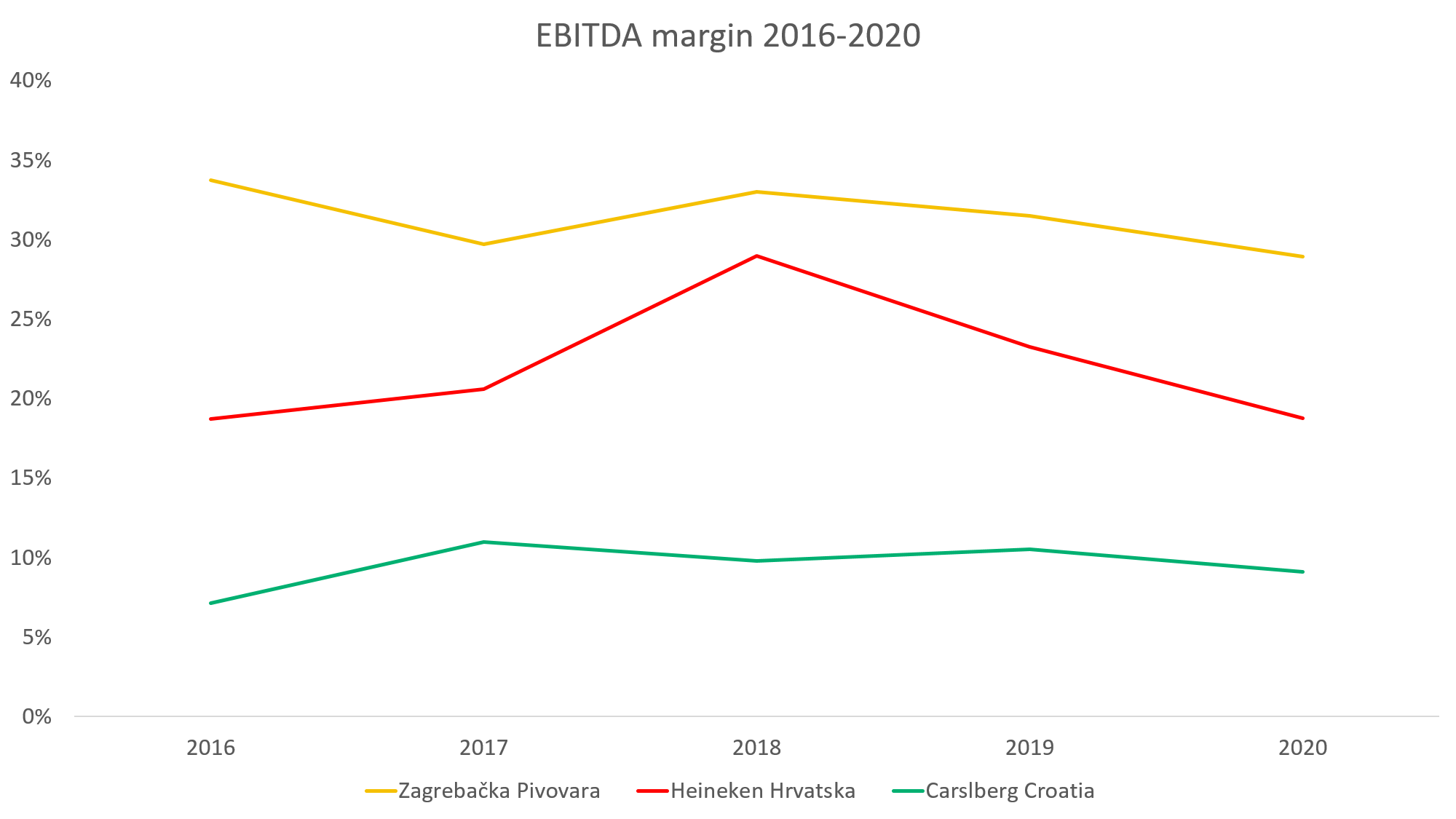
This graph shows the profitability of these three most prominent market players measured by the EBITDA margin, and the difference is pretty obvious. There are numerous possible reasons behind this, including utilization of economy of scale, bargaining power with suppliers and buyers, the extent of automatization, among many others. However, one thing is certain Zagrebačka Pivovara currently has the best position in the market with the highest market share and highest EBITDA margin.
The Croatian beer industry can be characterized as a mature industry with not much growth potential; for example, from 2016 to 2019, Zagrebačka Pivovara is the only one of the three companies above that had a positive CAGR of around 3%. The biggest trend that is fueling the growth of this industry is the craft beer revolution which I already covered in my other article. Even these big mainstream beer producers are beginning to realize the potential of this new niche segment, with Zagrebačka Pivovara rolling out their craft beer brand Grif.
Other beer producers worth mentioning, in order of their total revenue, are Osječka Pivovara, Pivovara Daruvar, Istarska Pivovara, Pivovara Medvedgrad, Garden Brewery and Pivovara Ličanka. These were among the top 10 Croatian beer producers in 2020; they accounted for another 10% of the market.
It will be interesting to observe how will Croatian beer industry develop in the coming years, will the three significant forces hold their positions while adapting to the changing consumer preferences, and how will the craft beer scene affect the whole market.
For more, check out our business section.
Croatian Craft Beer Scene: A Revolution
February 19th, 2022 - Croatian craft beer scene - an overview of the beer revolution in the country.
It is quite difficult to settle on just one definition of craft beer. To fully understand the meaning of the phrase craft beer we have to understand what makes a craft brewery or sometimes called a microbrewery. According to the American Brewers Association, a craft brewery is a brewery that is:
- independent (up to 24% of that brewery can be owned by another company that is not in the craft brewing industry)
- uses traditional ingredients in the process of making beer
- does not produce more than 6 million barrels
This definition is also a legal framework in the USA, unfortunately, this is not the case in Croatia as reported by Nova Runda. Nevertheless, while exploring the craft beer scene in Croatia, this article will follow the mentioned guidelines, given that they are informally accepted around the world.
Craft beer and craft breweries can be viewed as a sort of a beer revolution that influenced the whole industry. The main characteristics of the movement include emphasizing beer quality, innovation, creativity, and genuine love and passion for making high-quality beer. Craft breweries use natural and traditional ingredients, different brewing techniques, and often experiment with different flavours.
In Croatia, craft breweries started to appear in the last decade or so. The following list of breweries is going to be ordered by their total income. My goal here is not here to judge their quality or to favourise any of the mentioned firms, but merely to present this niche industry to a wider audience.
1. Garden Brewery
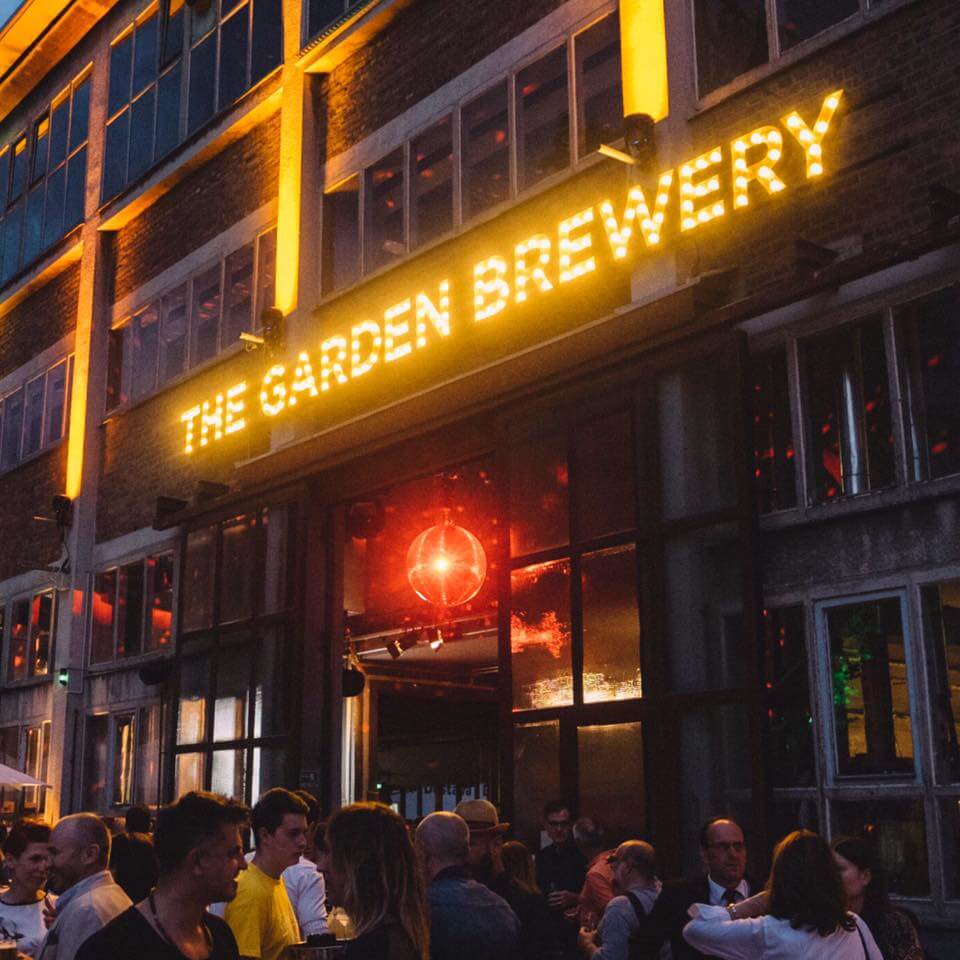
Garden Brewery was established in 2016 and has since grown to become one of the leading craft breweries in Croatia. The Garden Brewery d.d. is a holding company that made its Initial public offering (IPO) in 2020. The Garden Brewery is comprised of three firms: The Bird d.o.o. - craft brewery division, Lula d.o.o. –musical festivals management and Yellow Submarine d.o.o. – craft burgers chain. Garden Brewery was voted EU Championship Brewery in both 2019 and 2020. They developed numerous different beers throughout the years and it is really difficult to single out any of them. I would recommend that you visit their webshop to learn more.
In 2019 their craft beer division (The Bird d.o.o.) total income amounted to 22.3 mil HRK, which makes them the 6th biggest brewery in Croatia by total income. It should be emphasized that 21.9% of their craft beer sales come from exports.
2. Pivovara Medvedgrad
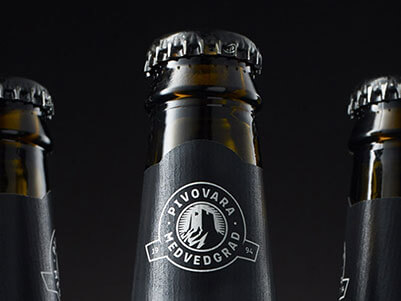
Pivnica Medvedgrad is the oldest brewery on this list. It was founded in 1994 by the firm IPIM which then designed and produced microbreweries. They are considered the oldest independent microbrewery in Croatia. Today they have 121 employees, 4 different pubs, and a new brewery that was opened for the 25th anniversary of its founding. They produced 44 different beers, designed and manufactured 21 microbreweries/craft breweries and it is worth mentioning that 8 breweries in Croatia operate with their production line. Their significance and contribution to the Croatian Craft beer scene cannot be disputed.
They produce year-round beers and seasonal beers. Some of their most famous beers are “Zlatni Medvjed” (pilsner), “Grička Vještica” (strong dark lager), “Dva Klasa” (wheat beer), “Crna Kraljica” (dark lager), and “Fakin Ipa” (Indian pale ale). For more information visit their website.
In 2019 their total income amounted to 17.9 mil HRK, which makes them the 7th biggest brewery in Croatia by total income.
3. Zmajska pivovara
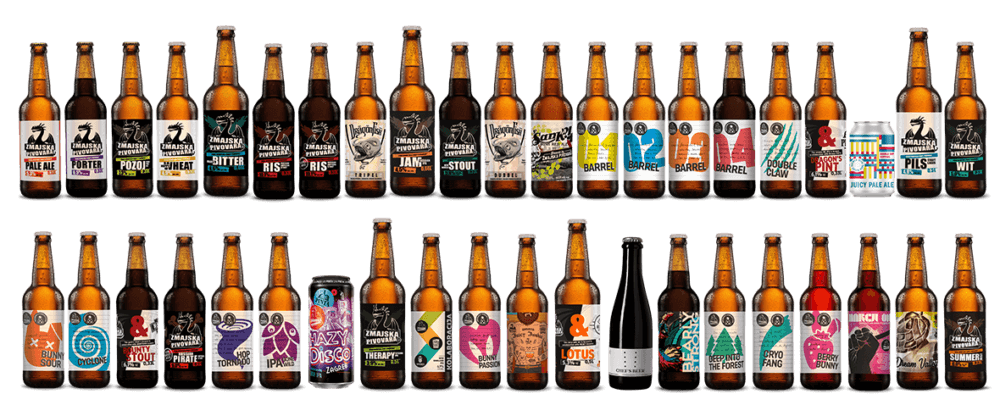
Zmajska Pivovara was founded in 2013 and is considered one of the pioneers of the craft beer movement. Their founder Andrej Čapka was a passionate homebrewer and initiator of the forum site pivarstvo.info. As they mention on their website, their main goal was to introduce different beer styles and to “gradually educate palates for tasting and enjoying beer”. ¸In 2014 Zmajsko introduced their first two beers: Pale Ale (American Pale Ale) and Porter (American Porter). From there they continued to explore different beer styles and flavours and until today they have introduced 45 different beers.
In 2019 their total income amounted to 8 mil HRK, which makes them the 12th biggest brewery in Croatia by total income.
4. Bujska Pivovara
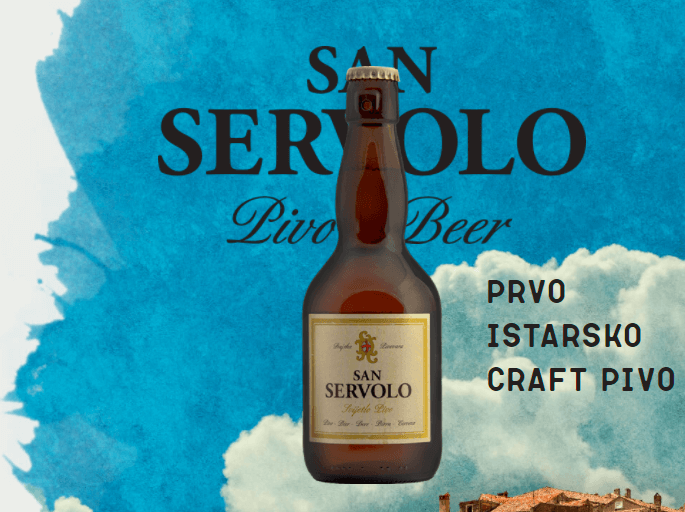
Bujska Pivovara was founded in 2013 and was branded as the first Istrian craft brewery. The brewery was founded to provide local restaurants with a variety of beer, “beer as it used to be, unfiltered and unpasteurized”. The brewery started in a garage with a yearly production of 50 000 L, and in 2016 their yearly production amounted to 800 000 L as reported by gastro.24sata.hr.
Their beer assortment is made out of 6 year-round beers all under their brand name San Servolo: Lager, Red Lager, Dark Lager, IPA, APA, and Gold. They also have two seasonal beers San Servolo Gold Teranino and Truffler. For more information visit their website.
In 2019 their total income amounted to 7.1 mil HRK, which makes them the 13th biggest brewery in Croatia by total income.
5. Varionica Craft Brewery
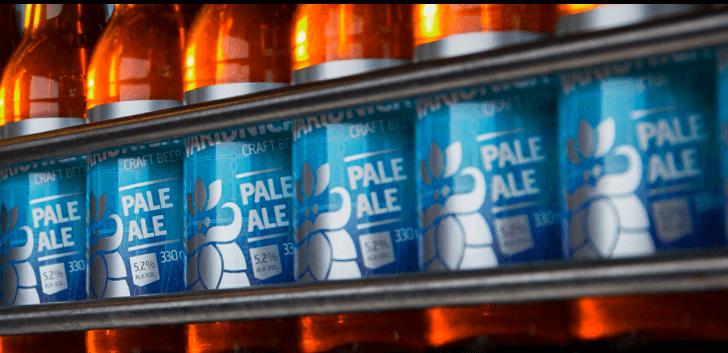
Varionica Craft Brewery was established in 2014 and is located in Pisarovina, near Zagreb. Varionica was founded by beer enthusiasts Matija Mrazek and Davor Simičić. As they emphasize on their website, they focus on “innovation, creativity, and quality without compromise.” Their beer assortment consists of Pale Ale, Deep Dive IPA, Siesta Session IPA among many others which you can check on their website. They are often involved in collaborations with other firms (not just from the craft beer industry) and they love to experiment with different flavours and ingredients.
In 2019 their total income amounted to 4.9 mil HRK, which makes them the 15th biggest brewery in Croatia by total income.
6. Nova Runda
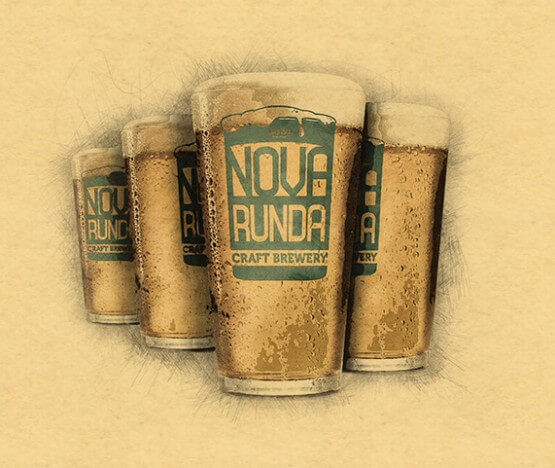
Nova Runda brewery was established in 2013. Their story started with two friends Marko Filipin and Miroslav Šuvak, who, at the time, experimented with homebrewing. The company first started as a gypsy brewery in cooperation with microbrewery Kahli. After 5 years of producing beer at different leased properties, in 2019, they finally opened their production plant in Zabok, near Zagreb.
Their philosophy is that beer should be consumed fresh, that is why you cannot find their beers in bottles but rather just in kegs and cans. Some of their most famous beers are Nova Runda APA (American Pale Ale), C4 (Indian Pale Ale), and Brale (Brown Ale). You can find a detailed list of their beers and the locations of their distributors on their website.
In 2019 their total income amounted to 4 mil HRK, which makes them the 16th biggest brewery in Croatia by total income.
7. Crafter’s
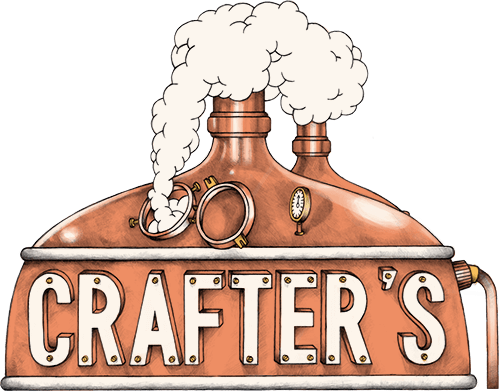
Crafter’s brewery was established in 2016 and is located in Dugo Selo. They produced the first Croatian beer from nutmeg called Muskateer as reported by Jutarnji.hr. The full list of beers that they currently produce can be found on their website.
In 2019 their total income amounted to 2.6 mil HRK, which makes them the 17th biggest brewery in Croatia by total income.
8. Dubrovnik Beer Company
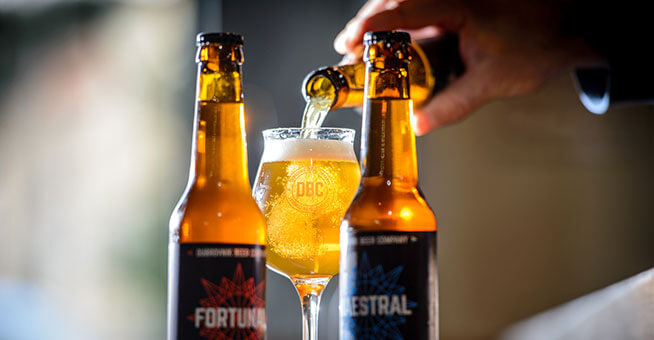
Dubrovnik Beer Company was established in 2016, it is the first brewery in Dubrovnik. Their beer assortment consists of four beers: Maestral (Lager), Fortunal (Pale Ale), Grego (Milk Stout), and GOA (New England IPA). In 2017 they opened their own taproom in Dubrovnik. For more information visit their website.
In 2019 their total income amounted to 2.1 mil HRK, which makes them the 18th biggest brewery in Croatia by total income.
9. Zeppelin Craft Brewery
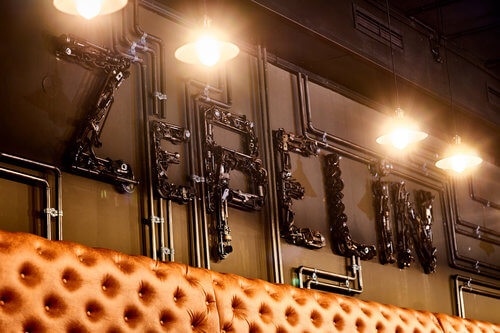
Zeppelin Craft Brewery was established in 2017 and is located in the city of Bjelovar. Their beer assortment consists of Merkat (Golden Ale), Flamingo (American Amber Ale), Rakoon (Porter), Marmun (Weizen), Pilsss (Pilsner) and Tapir (IPA). The names of their beers are based on fictional characters who make up the crew of the Zeppelin. They opened their own pub called “Zeppelin Pub” in Bjelovar and as their slogan says the Zeppelin is “Hovering above all”. For more information visit their website.
In 2019 their total income amounted to 2 mil HRK, which makes them the 19th biggest brewery in Croatia by total income.
10. Beckers Craft Brewery
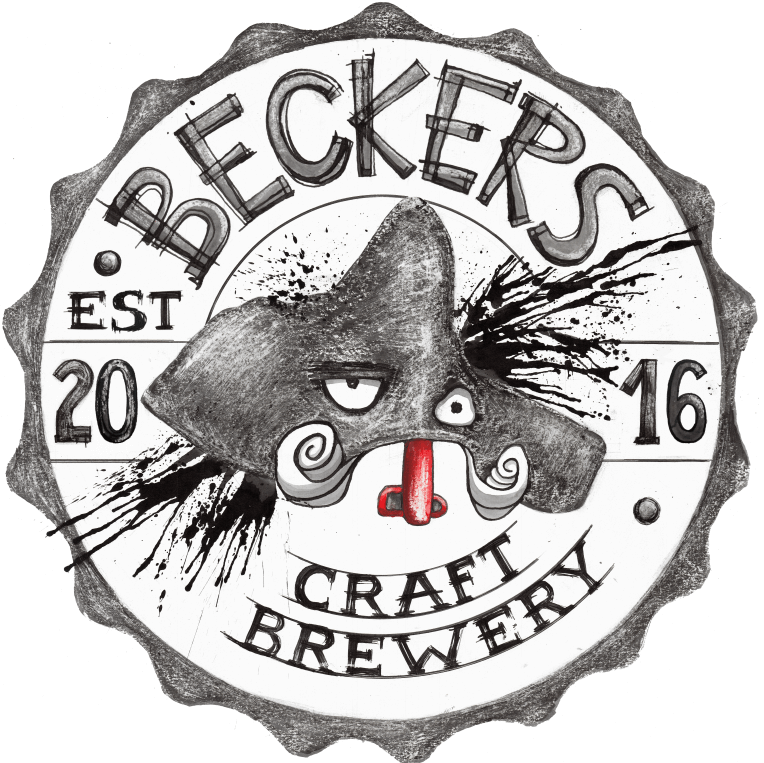
Beckers Craft Brewery was established in 2016 in the city of Osijek. Their beer assortment consists of four beers: American Pale Ale, Irish Dry Stout, Czech Pilsner, and Extra Special Bitter. Their Pale Ale was voted Croatian best pale ale by the app Untapp’d. You can find these beers at their pub in Osijek.
In 2019 their total income amounted to 1.8 mil HRK, which makes them the 20th biggest brewery in Croatia by total income.
There was a total of 84 microbreweries in 2020 according to The Brewers of Europe. It is impossible to name them all on this list. I will use the following paragraph to mention some that did not make the top of the list but are equally important for the development of the craft beer scene in Croatia.
- Bura Brew - founded in 2015, located in Poreč
- L.A.B Split - founded in 2015, located in Split
- Brlog Pivovara – founded in 2016, located in Zadar
- Tap B – founded in 2017, located in Split
- Šibenska Pivovara – founded in 2016, located in Šibenik
- Pivionica – founded in 2015, located in Zagreb
- Primarius Craft Pivovara – founded in 2017, located in Zagreb
- Kampanjola – founded in 2018, located in Svetvinčenat
- Valens – founded in 2016, located in Vinkovci
- Barilo Pivovara – founded in 2018, located in Dugi Rat
In the end, I would like to conclude that the craft beer scene in Croatia is still flourishing and the coming years will bring us many different beer styles, collaborations, and beer festivals. This niche segment of the beer industry is very agile, innovative, and creative. The craft revolution has spread like wildfire reaching every corner of our small country. The likes of Zagrebačka pivovara and Heineken Hrvatska which are the two biggest players in the Croatian Beer industry should carefully observe what is happening in their backyard.
Information presented in this article is based on the data from breweries' company websites.
For more, check out our business section.
For more, check out our lifestyle section.
Zagreb Brewery's K Pivovara's Pale Ale and Oatmeal Stout Now in Cans
October the 25th, 2021 - The much loved and very popular Zagreb Brewery and K Pivovara (Brewery) which is under its auspices, has created even more variation in what was declared the world's best beer in its category back in 2020.
As Poslovni Dnevnik writes, last year, the beer that was declared the best in the world in its category - Grif Pale Ale, produced by K Pivovara from Zagreb, has been recently being producted in a brand new form - a 0.33 litre can. Along with the Pale Ale style in the new packaging, Oatmeal Stout is also now available in that form in stores. From the very beginning, these beers have been being produced in solely half-litre glass bottles.
From this microbrewery, otherwise under the auspices of the Zagreb Brewery, which is the Croatian market leader, they explained why they decided on heading in the direction of cans as opposed to more bottles.
“A small 0.33 litre can is practical and light and holds the ideal amount of beer for many consumers. At Grif, we approach the production of master beer uncompromisingly, and every drop of our skill poured into these new cans will confirm that fact once again,'' noted the manager for excellence of customers and consumers at K Pivovara, Dominik Palcic.
Cans of Griff's very own trump cards are on sale across numerous retail chains within Croatia, including Konzum, Interspar, Djelo and Vrutak, and the company is announcing its entry into a number of others soon.
These beers have been present here on the Croatian, otherwise very much thriving craft brewing scene since back in 2017, and Grif proved its mastery and quality not only here but also abroad.
Just last year, at the World Beer Awards held in the British capital of London, among 2,200 beers from 50 countries around the world, their Pale Ale won the title of World's Best Pale Golden Ale based on blind tasting.
For more, check out Made in Croatia.
Much Loved Croatian Zmajska Pivovara Enjoys Million Euro Revenue
September the 8th, 2021 - The Croatian Zmajska pivovara (brewery) has been around for a while and is often considered to have been the catalyst for the blossoming and very popular Croatian craft beer scene. It has experienced an increase in revenue and has developed a few new looks.
As Poslovni Dnevnik/Sergej Novosel Vuckovic writes, the anniversary of it having been seven years since the launch of the first ''dragons'' (zmajevi) was marked last weekend by the Croatian Zmajska pivovara. The celebration took place in ''the dragon's nest'' in Jankomir, and on that occasion, the company's products were visually refreshed, after the new logo was unveiled back in July.
At the ceremony, called Zmajevo novo ruho (The dragon's new round), the new labels from the Croatian Zmajska pivovara brewery that practically kicked off the local revolution of craft brewing, and which is still in progress, were presented.
The visual aspect of Pale Ale, Porter, Pozoje and other favourites are now in line with the top quality of the product, said the owners of the brewery, Andrej Capka and Hrvoje Cirjak, emphasising that the new visual is more modern and direct, and yet still recognisable.
“It captures the essence of the Croatian Zmajska pivovara and and the main values of the brand: leadership, independence, uncompromisingness, inspiration, courage, and mastery,” they stated from the company.
This brewery has otherwise very much been stabilised and become known as the flagship of the Croatian craf beer scene, a scene that already has more than 100 small independent players on it, and 45 types of beer have been placed on the market so far from Jankomir.
Since back in 2014, 1.5 million euros have been invested in plant and equipment, today, the Croatian Zmajska pivovara has revenues of around one million euros per year, with a growth rate of 20 percent, they say. They also ended pandemic-dominated 2020 in a positive light, despite the impossibility of using the hospitality and catering industry as a sales channel due to lockdowns, which spilled over to part of 2021, too.
“We have twelve full-time employees all year round. Our beers are available to customers through the network of almost all Croatian retail chains. We also export successfully, so far we make about 10 percent of our sales abroad,'' concluded Capka and Cirjak.
For more, make sure to check out Made in Croatia.
Barilo Brewery: Croatian Beer Tells Stories of Pirates and More
December the 27th, 2020 - The coronavirus-dominated year has seen many businesses struggle, with some even completely going under. The Barilo Brewery, however, which is a small family brewery in Dugi Rat and was founded three years ago by Tomislav Raos, is doing well.
As Poslovni Dnevnik/Marta Duic writes, according to Raos, after working abroad, studying and tasting different types of beer across Europe, he decided to study the literature behind it all and brew his own beer here in Croatia. After his products were well received by both friends and acquaintances, he decided to open up his own brewery.
He procured machines for what was to become the Barilo Brewery from the Sibenik Brewery, which was then procuring new ones and expanding its own production, and with that, he waded into what are often challenging entrepreneurial waters. As he says, his goal was to create a brewery that would be truly local and for that very reason he uses local motives in building the Barilo Brewery brand.
“When we started brewing beer, we started with two types. Light beer, Mila, in the style of golden ale named after Mila Gojsalic, a mythical figure from Croatian history and a dark beer called Malduk which is done in the style of Irish red ale and is named after the most famous leader of the Omis pirates, Kacic from the thirteenth century.
A year later, we released our third Apach beer which is done in the style of American pale ale. The name Apach is an abbreviation of American Pale Ale Cetina Croatia and is a reminder of the time when the film Winnetou was shot in the Cetina canyon.
Our craft beer is produced in our own plant which has a monthly maximum capacity of 5000 litres, and the annual production last year was close to 30,000 litres. We procure our raw materials for production mostly abroad from producers who have been producing very high quality products for a long time, but we also cooperate with Croatian producers and companies,'' says Raos.
Historical characters, more precisely the heroes of the wider Cetina region, are drawn on the Barilo Brewery's beer labels, and if you ''read'' the QR code on the label with your smartphone, you will also get a complete story about Barilo, their beers and the heroes from the labels.
Since their goal from the very beginning was to build a local brand and a brewery, they sell the most there. Barilo Brewery beers can be purchased at several locations in the vicinity of Dugi Rat, smaller shops, petrol stations and in Split at several points of sale.
"On top of that, the vast majority of cafes, pubs and restaurants in our area offer our beers, and they can be purchased in specialised craft beer shops in Split, Dubrovnik and Zagreb, as well as on several Dalmatian islands. We have the greatest cooperation with restaurants and cafes in the City of Omis, which is a very popular tourist destination in the summer season,'' noted Raos.
Just like everyone else in this industry, during lockdown they felt a significant drop in sales revenue because all the catering and hospitality establishments they work with were forced to close, and they are now again, for the second time. Although sales were significantly reduced at that time and everything was reduced to home deliveries, the year was still more than successful for this craft brewery.
"This year, we've made a lot of new contacts with future customers and there are very good indications for next season. That's why we're optimistic about expanding our capacitoes. We're currently in the phase of moving to a much larger space and upgrading and our increasing production capacity, and our intention is to launch more new beers and thus increase our offer,'' revealed Raos.
In addition to success in the domestic and especially their local market, the Barilo Brewery has already had several inquiries for the export of beer from European Union (EU) countries.
"After several months of negotiations, we also agreed to export to Italy, and in November the first quantities went to the surroundings of the city of Ancona, which we're extremely pleased with and proud of. Our plans are primarily to maintain the quality of our beer, cooperate with reliable partners and hire several more workers,'' concluded Tomislav Raos.
For the latest travel info, bookmark our main travel info article, which is updated daily.
Read the Croatian Travel Update in your language - now available in 24 languages


